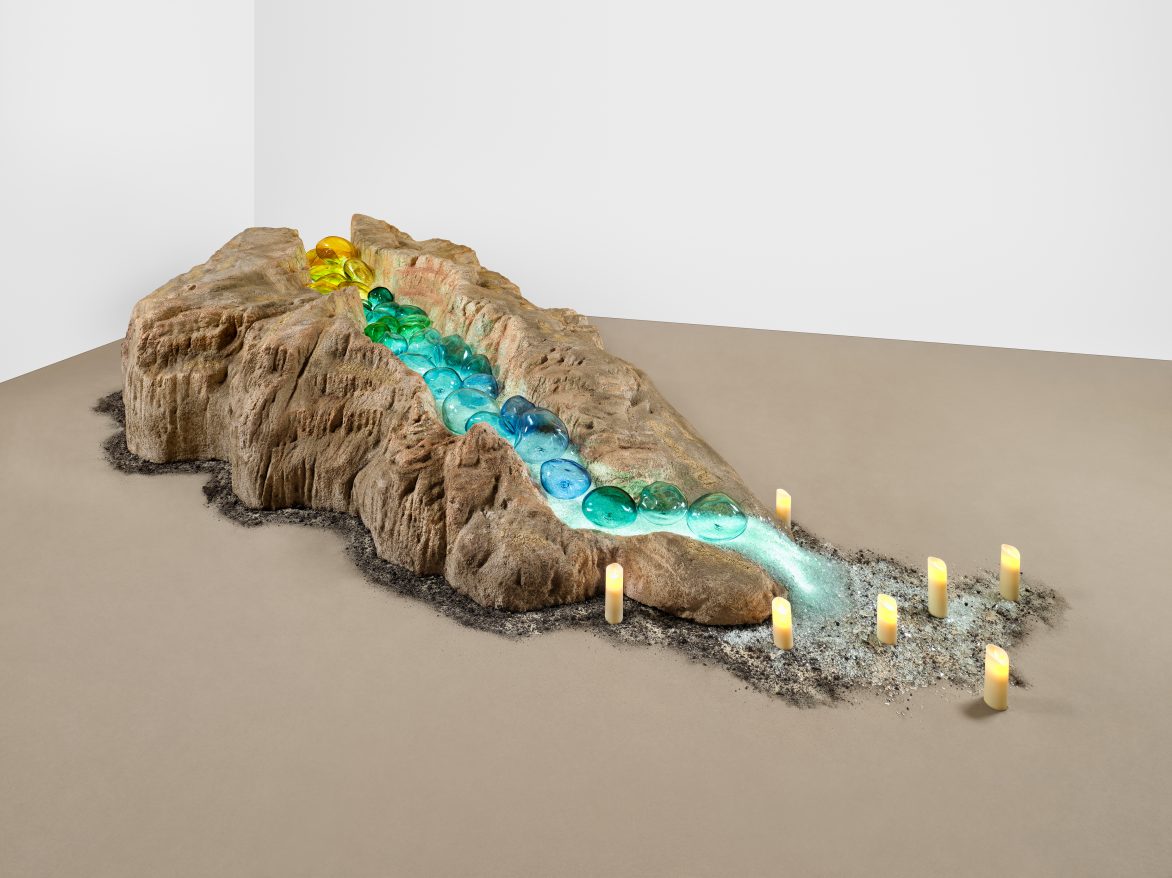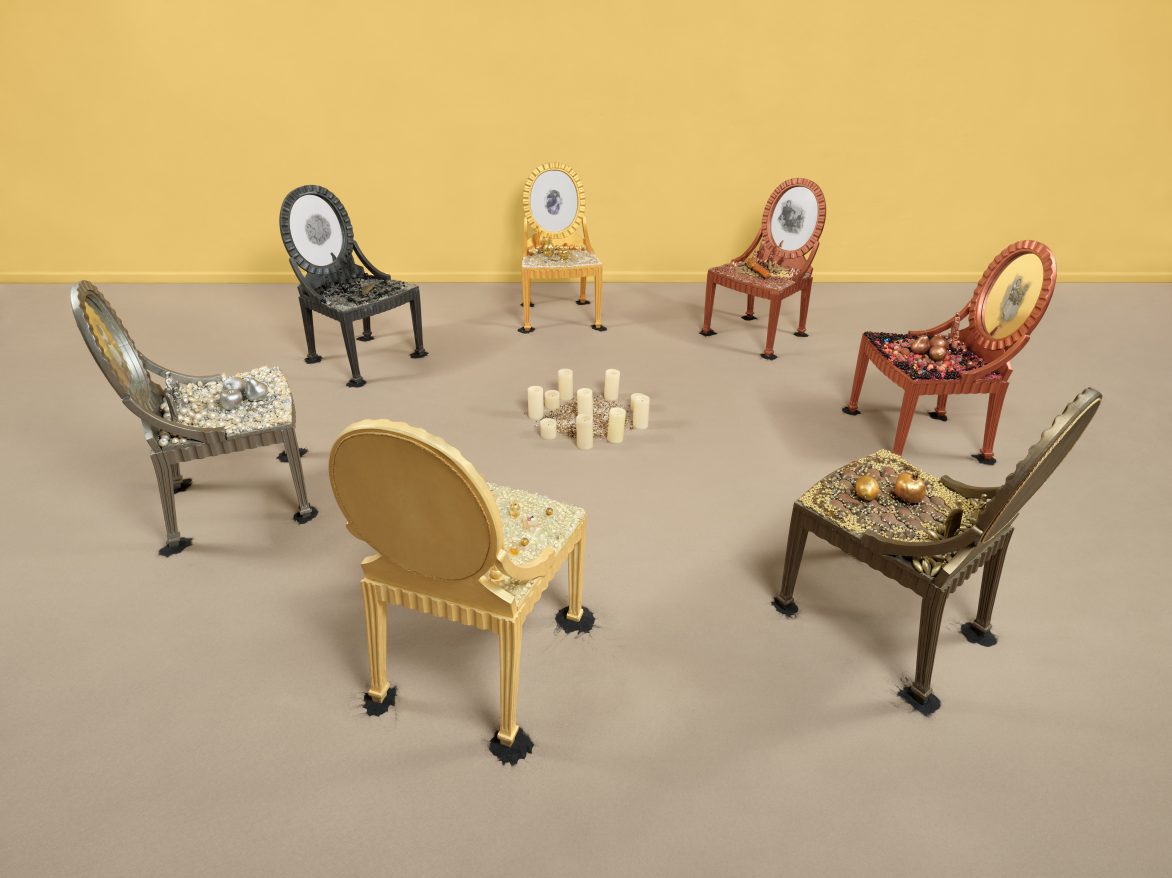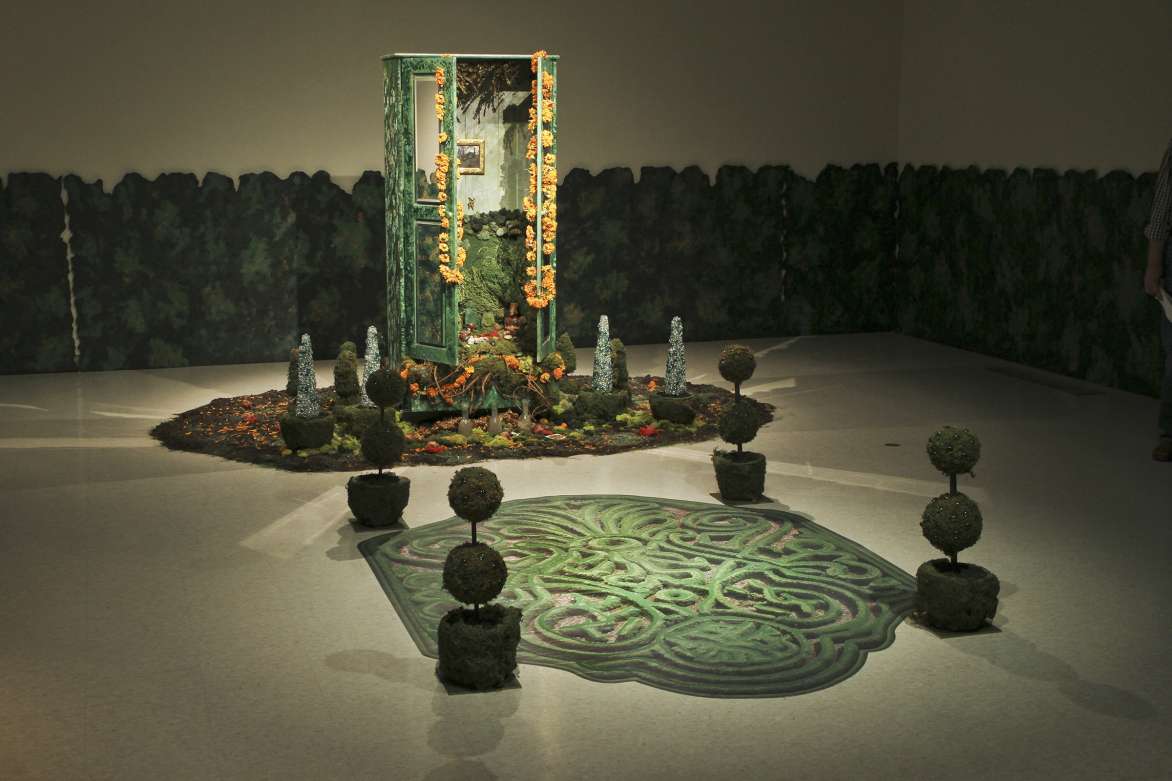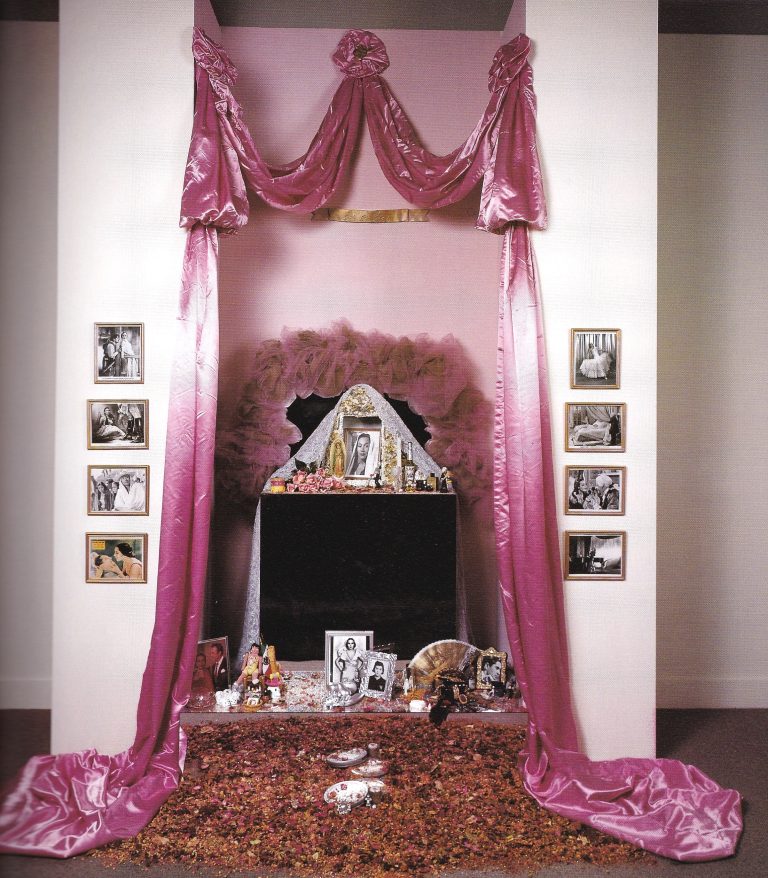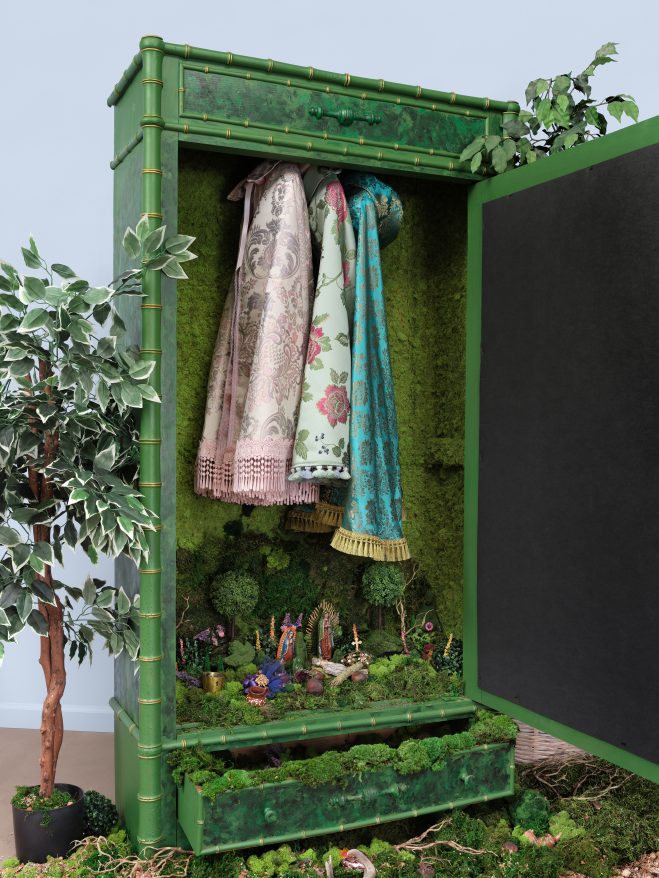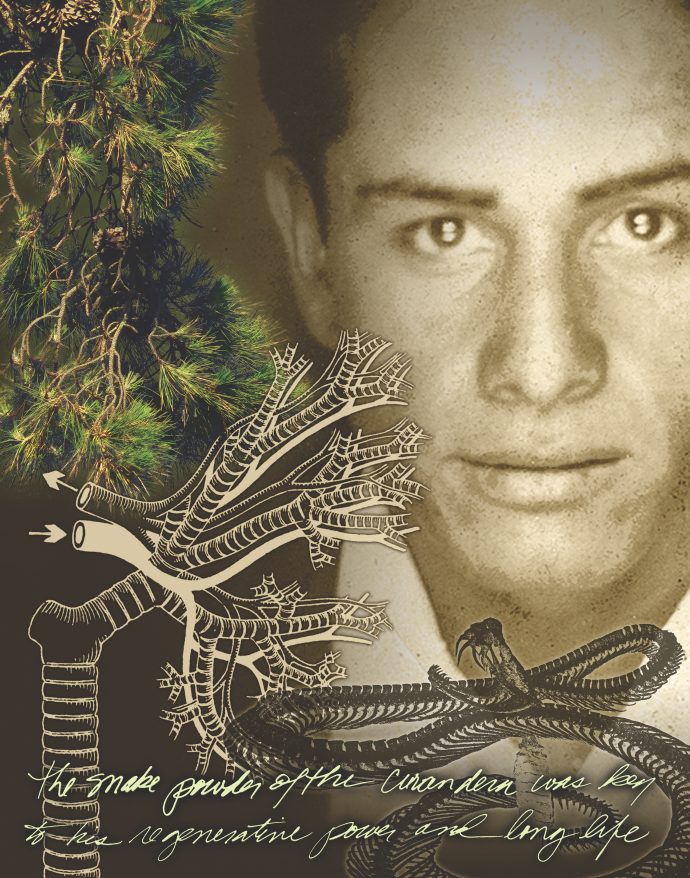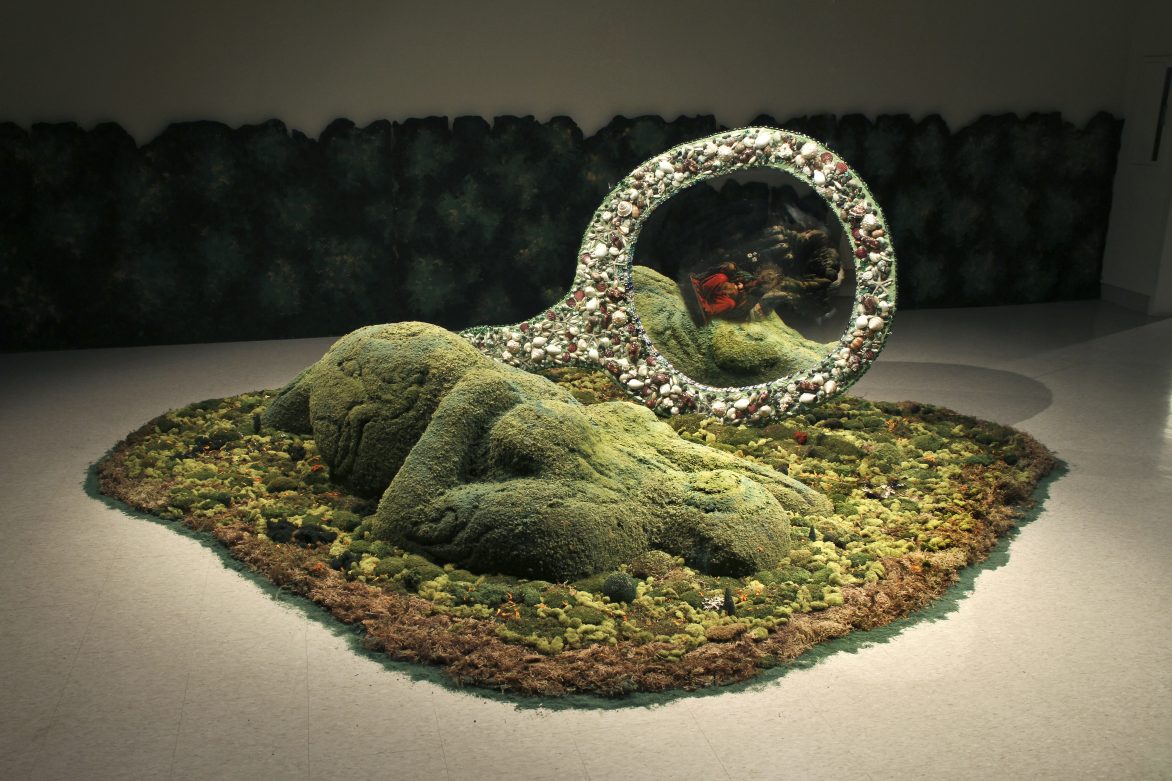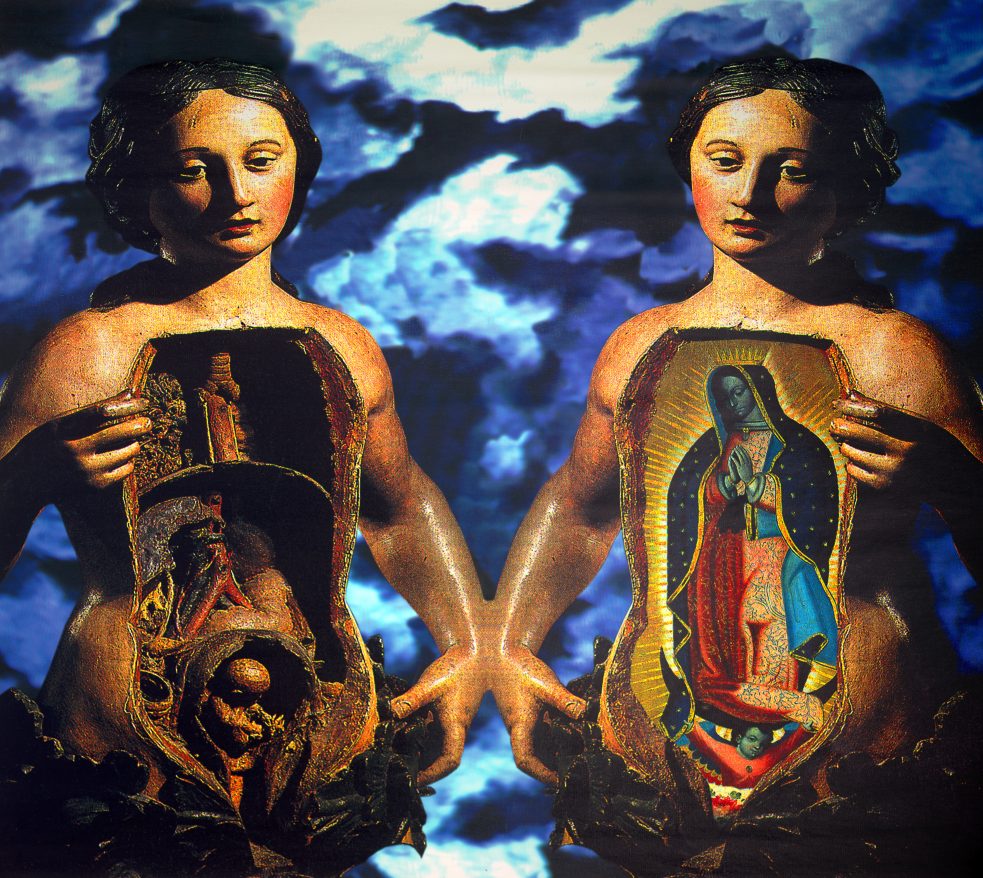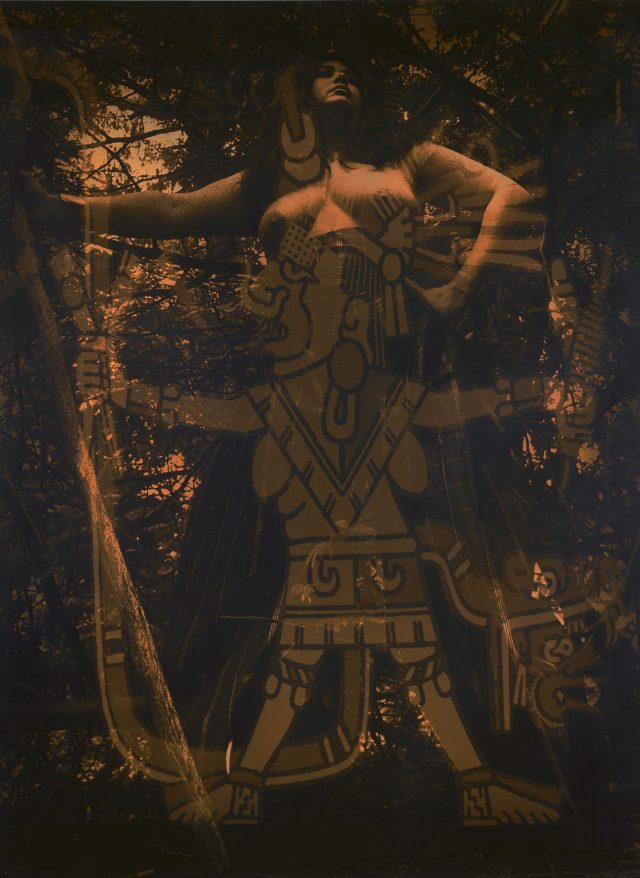Amalia Mesa-Bains: Archaeology of Memory is the first retrospective exhibition of the work of longtime Bay Area artist Mesa-Bains. Presenting work from the entirety of her career for the first time, this exhibition, which features nearly 60 works in a range of media, including fourteen major installations, celebrates Mesa-Bains’s important contributions to the field of contemporary art locally and globally.
For over forty-five years, Mesa-Bains has worked to bring Chicana art into the broader American field of contemporary art through innovations of sacred forms such as altares (home altars), ofrendas (offerings to the dead), descansos (roadside resting places), and capillas (home yard shrines). She expanded her installations from domestic spaces to include laboratories, library forms, gardens, and landscapes, focusing attention on the politics of space to highlight colonial erasure of the preexisting and still-surviving cultural differences in colonized Indigenous and Mexican American communities. Many of these works offer a feminist perspective on the domestic life of immigrant and Mexican American women across different historical periods—most notably the four-part installation series Venus Envy, which was created over multiple decades and will be displayed in its entirety for the first time at BAMPFA.
